
A tummy tuck, also referred to as an abdominoplasty, is a common cosmetic surgery procedure that tightens the underlying muscles and removes excess skin and fat to improve the appearance of the abdomen. A flatter, firmer, and more aesthetically pleasing abdominal contour is the end result. Over the years, tummy tucks have become extremely popular due to their effectiveness in treating common midsectional issues like sagging skin, weak abdominal muscles, and stubborn fat deposits that do not respond to diet and exercise.
The abdomen is a part of the body where things like weight changes, pregnancy, aging, and genetics can have a big impact. These elements frequently play a part in the emergence of loose skin, stretch marks, and abdominal muscle separation. By addressing these problems, a tummy tuck aims to increase a person's confidence and self-esteem.
Women who have had several pregnancies, people who have lost a significant amount of weight, and people who have noticed aging-related changes to their abdomen frequently seek out abdominoplasty. Due to the procedure's high degree of adaptability, plastic surgeons can customize it to meet the specific requirements and objectives of each patient.
In a tummy tuck, the surgeon carefully separates the skin and fat from the underlying abdominal muscles by making a horizontal incision across the lower abdomen, typically from hip to hip. In order to create a firmer, more toned abdominal wall, the muscles are next sutured together. After extra skin has been removed, the remaining skin is redraped and fixed in place with sutures. To further sculpt and contour the area, liposuction may occasionally be done in conjunction with abdominoplasty procedures.
Following a tummy tuck, patients are typically advised to follow specific post-operative instructions provided by their surgeon for several weeks. These might involve avoiding strenuous activities, donning a compression garment, and gradually resuming daily activities as instructed.
Despite the fact that a tummy tuck can produce impressive results, it is crucial for patients to have reasonable expectations and recognize that the procedure is not a means of achieving weight loss. Long-term abdominoplasty results must be preserved by maintaining a healthy lifestyle that includes a balanced diet and regular exercise.
The appearance of the abdomen can be significantly improved by a tummy tuck, which can restore a firmer, flatter, and more toned appearance. Surgery can make patients feel more confident and at ease in their bodies by addressing issues with extra skin, fat, and lax muscle tissue.
A tummy tuck can provide significant improvements to the appearance of the abdomen, but it is not suitable for everyone. Ideal candidates for a tummy tuck typically meet the following criteria:
Stable Weight: A good candidate should be at or near their ideal body weight and have maintained a stable weight for at least six months. Tummy tuck surgery is not a weight loss solution, and significant weight fluctuations after the procedure can compromise the results.
Excess Skin and Fat: Candidates should have excess skin and fat in the abdominal area that cannot be addressed through diet and exercise alone. This can result from weight loss, pregnancy, or aging.
Muscle Laxity: A tummy tuck is particularly beneficial for those with weakened or separated abdominal muscles (diastasis recti) due to pregnancy or other factors.
Good Overall Health: Ideal candidates should be in good overall health and free from any medical conditions that could increase the risk of complications during surgery or recovery. This includes conditions such as diabetes, heart disease, or uncontrolled high blood pressure.
Non-smoker: Smoking can significantly increase the risk of complications during and after surgery, as well as slow down the healing process. Candidates should quit smoking at least four to six weeks before surgery and remain smoke-free throughout the recovery period.
Realistic Expectations: It's essential for candidates to have a clear understanding of the procedure, its potential outcomes, and limitations. A tummy tuck can improve the contour and appearance of the abdomen, but it is not a substitute for weight loss, nor does it address stretch marks or other skin imperfections outside the treatment area.
Committed to a Healthy Lifestyle: A tummy tuck yields the best results when combined with a healthy lifestyle, including a balanced diet and regular exercise. Candidates should be committed to maintaining these habits after surgery to preserve their results.
Understanding the various surgical options available to address different issues and produce the desired results is crucial when thinking about a tummy tuck. The most popular tummy tuck procedures are as follows:
The best candidates for a mini tummy tuck have minimal excess fat and mild to moderate lower abdominal skin laxity. This procedure uses a smaller incision than a full tummy tuck and targets the area below the belly button. The lower abdomen becomes firmer and flatter after the surgeon trims away extra skin and tightens the lower abdominal muscles. A mini tummy tuck typically requires less recovery time than a full tummy tuck.
The full tummy tuck, also referred to as a traditional or standard tummy tuck, targets extra skin and fat throughout the entire abdominal region, from the pubic area to the rib cage. An incision from hip to hip, just above the pubic bone, and an additional incision around the belly button to reposition it are required for this procedure. For a smoother, flatter appearance, the surgeon tightens the abdominal muscles, trims away extra skin, and redrapes the skin. The best candidates for a full tummy tuck have significant skin laxity and separated abdominal muscles, which is frequently the result of pregnancy or significant weight loss.
Individuals with significant skin laxity that extends to the flanks and lower back are candidates for an extended tummy tuck. Similar to a full tummy tuck, this procedure removes extra skin and fat from the flanks and lower back in addition to the entire abdomen. The lower back may also be reached by the incision, which circles the hips. For a smoother, more contoured appearance, the surgeon redrapes the skin and tightens the abdominal muscles. People who have undergone significant weight loss or who have significant skin laxity from aging or genetics are good candidates for this procedure.
The more involved fleur-de-lis tummy tuck requires both horizontal and vertical incisions. The best candidates for it are patients who have significant amounts of excess skin both vertically and horizontally, typically following significant weight loss. Along with the horizontal incision, a vertical incision from the lower chest to the pubis is also made, forming the shape of a fleur-de-lis. This enables the surgeon to more successfully trim the abdominal muscles and remove extra skin. The overall contour and shape of the abdomen are significantly improved by this procedure, but there are more obvious scars as a result.
The best type of tummy tuck for you will depend on your unique concerns, your goals, the degree of skin laxity, and the amount of extra fat. To get the results you want, you must consult with a board-certified plastic surgeon who can assess your needs and suggest the best course of action. Understanding the various tummy tuck procedures available will help you choose the one that will give you a new, flatter, and smoother abdomen while also ensuring a successful procedure.
For a successful tummy tuck surgery and a quick recovery, proper planning is crucial. Following these important steps will help you get ready for your tummy tuck procedure:
It's crucial to choose a plastic surgeon who has received extensive training in tummy tuck procedures and is board certified. An experienced surgeon will evaluate your general health, talk with you about your objectives, and suggest the best course of action to produce the results you want.
Your surgeon will go over the specifics of the procedure during the consultation, including the type of tummy tuck, anesthesia options, possible risks, and anticipated results. Additionally, this is a great chance for you to voice any queries or concerns you may have.
You'll receive detailed preoperative instructions from your surgeon, which may include stopping any prescription drugs, dietary supplements, or herbal remedies that could increase the risk of bleeding during surgery. A few weeks prior to surgery, you might also be advised to stop smoking in order to encourage proper healing and lower the chance of complications.
It's crucial to make arrangements for someone to drive you home and help you recover for at least the first few days after surgery because you'll have limited mobility right away. In order to ensure a comfortable recovery, you might also want to prepare your home by stocking up on groceries, medications, and any other supplies.
Your body's capacity to heal after surgery can be enhanced by eating a balanced diet, staying hydrated, and exercising frequently. However, in the weeks preceding your procedure, refrain from any strenuous activity or heavy lifting.
Make certain you have all the tools you'll need for post-operative care, including painkillers, compression clothing, and ice packs. On how to take care of your incision site, control swelling, and avoid infection, your surgeon will give you thorough instructions.
It's critical to have reasonable expectations for how your tummy tuck surgery will turn out. Although the procedure can significantly improve your abdomen's appearance, it cannot replace weight loss or a healthy lifestyle. To ensure that you have a clear understanding of what the surgery can accomplish, discuss your expectations with your surgeon.
You'll need time to recover properly from a tummy tuck because it's a major procedure. Ascertain that you have planned time off from work and made any necessary preparations to permit a stress-free recovery period.
You can increase the likelihood that your tummy tuck surgery will be successful and that you will have a quick, painless recovery by meticulously preparing for it. The best outcomes can be ensured by adhering to your surgeon's instructions and keeping lines of communication open throughout the procedure.
“The contour and appearance of the abdominal region can be improved with a tummy tuck, also known as an abdominoplasty. It addresses problems like extra skin, tenacious fat deposits, and weak abdominal muscles, which can be brought on by pregnancy, weight changes, or the aging process naturally. In this article, we'll examine the technical aspects of the tummy tuck procedure, the specifics of the operation, and the process for fixing diastasis recti, a common condition in which the abdominal muscles separate.”
To ensure the patient's comfort throughout the surgery, anesthesia is administered before the tummy tuck procedure even starts. General anesthesia or intravenous sedation may be used, depending on the requirements and preferences of the patient. After the patient has received the appropriate amount of sedation, the surgeon makes a horizontal incision just above the pubic area that may go from hip to hip, depending on the extent of the necessary correction. To remove extra skin in the upper abdomen, a second incision may also be made around the navel.
The surgeon then removes layers of skin and fat to reveal the abdominal muscles beneath. In order to create a firmer, flatter abdominal wall, the surgeon will suture the patient's separated muscles back together if they have diastasis recti. The abdomen looks better after this procedure, and any discomfort or functional problems may also be resolved.
The surgeon redrapes the skin over the newly contoured abdominal muscles after the muscles have been repaired, trimming off any extra skin. In order to maintain a natural appearance, the navel is then repositioned and sutured into place. Finally, surgical dressings or compression garments are applied to reduce swelling and aid in the healing process after the incisions are stitched shut.
The tummy tuck procedure can be tailored to each patient's specific requirements and goals. A mini tummy tuck or an endoscopic abdominoplasty might be a better option for people with less severe skin laxity or muscle separation. Even with shorter recovery times and smaller incisions, these procedures significantly improve abdominal contour.
“In conclusion, a tummy tuck is a strong procedure that can handle a variety of functional and esthetic issues in the abdominal region. Abdominoplasty can give patients a smoother, firmer, and younger appearance by combining the removal of extra skin and fat with the repair of weak or separated muscles.”
The recovery period following an abdominoplasty (tummy tuck) is a crucial stage of the entire procedure because the right aftercare and management can have a big impact on the outcome. This article will give a thorough overview of the healing process and offer advice on aftercare to ensure the best possible healing and satisfaction.
Post-operative care: Patients are typically taken to a recovery room right away after surgery, where they are closely watched. Once they are stable, they can go home, though some patients might need to spend the night in the hospital. During the first few days of recovery, it is crucial to have someone available to drive the patient home and offer assistance.
Compression garments: Following surgery, patients are typically required to wear compression clothing for a few weeks. These clothing items support the abdominal region, lessen swelling, and promote general healing.
Pain management: Pain and discomfort are common during the initial days following a tummy tuck. For the purpose of controlling post-operative pain, your surgeon will prescribe painkillers. After the first few days, you may use over-the-counter painkillers like acetaminophen, but always talk to your surgeon before changing your pain management routine.
Drains: The surgeon may occasionally insert temporary drains to help drain extra fluid from the surgical site. After surgery, these drains are typically removed in one to two weeks. You will receive detailed instructions from your surgeon on how to take care of and empty the drains.
Mobility and activity: To improve circulation and lower the risk of blood clots, light walking is advised right after surgery. However, you should refrain from demanding tasks, heavy lifting, and vigorous exercise for at least six weeks or until your surgeon gives the all-clear.
Wound care: Follow your surgeon's instructions for showering and bathing and keep the incisions clean and dry. Periodically changing dressings or applying antibiotic ointment may be required of you. Keep an eye out for any indications of infection, such as increased redness, warmth, or pus-like discharge, and immediately let your surgeon know if you have any concerns.
Follow-up appointments: Keep all of your surgeon's scheduled follow-up appointments. During these appointments, your surgeon can evaluate your development, take out sutures or drains, and address any issues or complications.
Scar management: Although scarring following a tummy tuck is unavoidable, there are steps you can take to lessen their visibility. You can use silicone sheets or gels, topical creams, or laser treatments to enhance the scar's appearance after the incisions have healed. Before beginning any scar treatment, always speak with your surgeon.
“Individual recovery times vary, but most patients can resume work and daily activities two to four weeks after a tummy tuck. To guarantee the best outcomes, it is essential to adhere to your surgeon's postoperative instructions and keep lines of communication open throughout the healing process. You can get a smoother, flatter, and more toned abdomen by being patient and following these instructions.”
A tummy tuck (abdominoplasty) has potential risks and complications, just like any surgical procedure. Despite the fact that the majority of patients have positive results, it's important to be aware of these risks and go over them with your surgeon during the consultation process.
The following are some possible side effects and risks of tummy tuck surgery:
Infection: Infections can develop following any type of surgery, including a tummy tuck. Increased redness, swelling, warmth, and pus-like discharge from the incision site can all be indicators of infection. Call your surgeon right away if you think you might have an infection because treating it effectively requires quick action.
Bleeding: Excessive bleeding during or following surgery is a potential complication. Rarely, it might necessitate additional surgery or a blood transfusion.
Hematoma or seroma: A seroma is a buildup of fluid beneath the skin, whereas a hematoma is a collection of blood outside blood vessels. Both can develop after a tummy tuck and, if they grow large or are uncomfortable, may need drainage or additional care.
Blood clots: Any surgery has a chance of causing blood clots to form, especially in the legs (deep vein thrombosis). If they reach the lungs, these clots can be fatal (pulmonary embolism). Patients are advised to move around and walk soon after surgery to reduce this risk.
Anesthesia complications: All surgeries requiring anesthesia come with some risk, such as allergic reactions or complications with the heart or lungs. Before the procedure, go over your medical history and any worries with your anesthesiologist.
Poor wound healing: The body's capacity to heal can be impacted by factors like smoking, some medications, and underlying medical conditions. An extended recovery time, more obvious scarring, or additional surgical intervention can be the result of poor wound healing.
Changes in skin sensation: After a tummy tuck, numbness or changes in skin sensation may last for a while or become permanent. While these modifications typically get better with time, some patients might still feel strange.
Unsatisfactory cosmetic results: Patients sometimes don't like how their tummy tuck turned out. Asymmetry, irregularities, or excessive scarring are a few examples of this. Revision surgery may be an option in these circumstances, but you should first speak with your surgeon about it.
Organ damage: Organ damage is a potential side effect of abdominal surgery, though it is uncommon. Additional surgical intervention might be needed if this happens.
To reduce these risks, it's crucial to select a board-certified plastic surgeon with experience performing tummy tuck procedures. To ensure the best outcome and lessen the possibility of complications, adhere to all pre- and post-operative instructions given by your surgeon. Keep in mind that every patient's experience is different, and that communicating your worries and expectations to your surgeon is essential to getting the results you want.
The goal of a tummy tuck, also known as an abdominoplasty, is to improve the appearance of the abdomen by removing extra skin and fat and tightening the supporting muscles. It is crucial to have reasonable expectations for the surgery's results and to be aware that everyone will react to it differently.
Here is a thorough explanation of what to anticipate after a tummy tuck:
Immediate results: Patients can anticipate a flatter, firmer, and more sculpted abdomen following surgery. Initial stages of recovery frequently involve swelling and bruising, which can momentarily obscure the outcome. To lessen swelling and support the abdomen during the healing process, compression garments are typically advised.
Scarring: A tummy tuck will leave a scar that typically runs from hip to hip on the abdomen. The appearance of the scar can change based on things like genetics, skin type, and individual healing processes. Although the scar will lighten with time, it will never completely vanish. The incision will be strategically placed by a skilled surgeon so that it can be concealed by undergarments or swimwear.
Long-term effects: If patients maintain a stable weight and lead a healthy lifestyle, the effects of a tummy tuck are long-lasting. The abdomen can change over time due to aging, pregnancy, and significant weight fluctuations. Patients are urged to maintain their tummy tuck results by eating a balanced diet and engaging in regular exercise.
Realistic expectations are crucial if you want to get the results you want from a tummy tuck. Although the procedure can significantly enhance the abdomen's appearance, it cannot replace weight loss or a suitable exercise regimen. Stretch marks that are not in the area of skin that was removed cannot be treated by a tummy tuck, and not all abdominal irregularities can be fixed.
Emotional impact: A tummy tuck can improve the appearance of the abdomen, which can improve one's overall body image and self-confidence. But it's important to keep in mind that not all issues with body image will be resolved by surgery, and neither will happiness. To make sure a tummy tuck is the best option for you, it's crucial to discuss your goals and expectations with your surgeon.
Revision surgery: Patients occasionally need revision surgery to address any complications or unsatisfactory results. This could involve further fat or skin removal, scar revision, or tightening of the muscles. During the consultation process, it is essential to go over the potential need for revision surgery with your surgeon.
In conclusion, a tummy tuck can significantly improve the appearance of the abdomen, which can help many patients feel more confident. Patients can get long-lasting results from their tummy tuck by leading a healthy lifestyle and setting reasonable expectations for the outcome.
The cost of an abdominoplasty, also known as a tummy tuck, can vary significantly depending on a number of variables. While the financial aspect of the surgery must be taken into account, it is crucial to avoid sacrificing the standard of care and the surgeon's experience.
The cost of a tummy tuck may vary depending on the following factors:
Surgeon's fees: The cost of a tummy tuck can change depending on the surgeon's qualifications, standing, and location. Plastic surgeons with a good reputation and lots of experience might demand a higher price. To ensure the best results, it is crucial to select a board-certified plastic surgeon with extensive experience performing tummy tuck procedures.
Geographic location: The cost of a tummy tuck can differ depending on where the clinic or hospital is located. Large cities and urban areas typically have higher costs because of higher overhead costs and increased demand for services.
Type of tummy tuck: Different tummy tuck procedures exist, including full abdominoplasty, mini-abdominoplasty, and extended abdominoplasty. The extent of the procedure and the complexity of the surgery will affect the overall cost. Procedures that are more involved or complex might take longer to complete, call for more advanced surgical techniques, and cost more money.
Anesthesia fees: Depending on the type of anesthesia used (general or local) and the anesthesiologist's fees, anesthesia costs can vary. The length of the procedure also affects the cost of anesthesia because longer procedures need more anesthesia.
Facility fees: Fees for the use of a surgical facility, such as a hospital or an outpatient surgery center, can also add to the overall cost of a tummy tuck. Depending on the location, amenities, and services offered, facility fees can change.
Additional costs: Costs not included in the price of the tummy tuck include preoperative testing, medications, compression clothing, and postoperative care. To fully understand the total cost, it is crucial to go over these extra expenses with your surgeon during the consultation process.
In conclusion, the cost of a tummy tuck can differ significantly depending on a number of factors. Prioritize the surgeon's skill and experience over the cost of the procedure and be sure to get a thorough cost breakdown from your surgeon during the consultation process. Keep in mind that most insurance plans won't cover the cost of a tummy tuck because it is typically regarded as a cosmetic procedure. To make the surgery more affordable, some surgeons might provide payment plans or financing options.
A tummy tuck, also referred to as an abdominoplasty, is a surgical procedure that tightens the abdominal muscles and removes extra skin and fat from the abdomen. Especially after significant weight loss, pregnancy, or aging, this procedure is frequently used to improve the appearance of a protruding or sagging abdomen.
Depending on the complexity of the procedure, a tummy tuck usually takes 2-4 hours to complete. It is done under general anesthesia. Just above the pubic region, the surgeon makes an incision across the lower abdomen. If necessary, the surgeon may also make a second incision around the navel. Before the incisions are closed, extra skin and fat are removed, and the abdominal muscles are toned.
Individual recovery times for a tummy tuck vary, but most patients can anticipate missing two to four weeks of work while they recover. In order to ensure a quick recovery, your surgeon will give you pain medication and thorough post-operative instructions. Swelling, bruising, and discomfort are frequent in the first few days after surgery. For several weeks, you will need to wear a compression garment to reduce swelling and aid in the healing process.
The final result will become apparent once the swelling goes down, which can take several months, although some results may be seen right away after surgery. Within 3-6 months following the procedure, the majority of patients notice a noticeable improvement in the look of their abdomen.
A tummy tuck has potential risks and side effects, such as infection, bleeding, scarring, anesthesia complications, and blood clots, just like any surgical procedure. During your consultation, your surgeon will go over these risks and take precautions to reduce them.
If you maintain a stable weight and a healthy lifestyle, the results of a tummy tuck can last for a very long time. However, the outcomes can be impacted by things like aging, weight changes, and upcoming pregnancies. To keep your results, it's imperative to stick to a healthy diet and exercise schedule.
The cost of a tummy tuck varies depending on the extent of the procedure, the surgeon's experience, and the patient's location. Tummy tucks are typically not covered by insurance because they are regarded as cosmetic procedures. It is imperative to go over the price with your surgeon while you are in consultation.
In order to achieve a more thorough body contouring result, a tummy tuck can be combined with other procedures, such as liposuction, breast augmentation, or a mommy makeover. Based on your unique needs and goals, your surgeon will assist you in selecting the best combination of procedures.
A successful tummy tuck depends on choosing a qualified and experienced board-certified plastic surgeon. Find a surgeon who has performed many abdominoplasty procedures, has received glowing patient feedback, and has a portfolio of results that show their skill. During your consultation, don't be shy about asking questions to
A tummy tuck will typically leave a scar that runs from hip to hip along the lower abdomen. Several elements, including your skin type, the surgical technique used, and how well your body heals, affect the scar's appearance. The majority of surgeons try very hard to make the incision low on the abdomen, which makes it simpler to cover the scar with undergarments or swimwear. The scar will probably get lighter and less noticeable with time.
After a tummy tuck, swelling is a typical sign of the healing process. The majority of swelling is typically experienced by patients within the first few weeks following surgery, with the swelling gradually going down over the following few months. The full resolution of the swelling and the realization of the final outcomes could take up to a year.
After your tummy tuck, your surgeon will give you specific instructions on how to start exercising again. In order to improve circulation, light walking is typically encouraged during the first week; more strenuous activities, like cardio and strength training, should be avoided for 4-6 weeks. To ensure the best possible healing and outcomes during the recovery process, it's crucial to pay attention to your body and refrain from overexerting yourself.
After a tummy tuck, it is possible to become pregnant, and the procedure shouldn't prevent you from having children. However, it's critical to recognize that pregnancy can stretch the skin and muscles of the abdomen, possibly impairing the outcomes of your tummy tuck. Due to this, many surgeons advise postponing a tummy tuck until after you have had children.
It's essential to keep your weight stable and lead a healthy lifestyle to keep the results of your tummy tuck intact. You can prevent weight fluctuations that could affect your results by incorporating a balanced diet and consistent exercise into your daily life. Avoiding tobacco use and too much sun exposure can also help you keep your tummy tuck looking good.
In conclusion, a tummy tuck can significantly improve the look of your stomach, enhancing your overall body contour and boosting your self-confidence. You can decide if a tummy tuck is the right choice for you by educating yourself about the process, risks, and outcomes. Select a qualified and seasoned board-certified plastic surgeon to perform your surgery if you want the best results possible.
In comparison to a full tummy tuck, a mini tummy tuck is less invasive and intended to treat extra skin and fat in the lower abdomen beneath the belly button. A mini tummy tuck does not require moving the belly button and typically has a shorter incision than a full tummy tuck. A mini tummy tuck typically requires less recovery time than a full tummy tuck. It is important to remember that patients with significant excess skin, fat, or muscle separation in the upper abdomen may not be candidates for a mini tummy tuck.
For the best results and to reduce any risks, choosing the right surgeon for your tummy tuck is essential. Find a board-certified plastic surgeon who has performed many tummy tucks. Never be afraid to request before-and-after pictures of their prior clients and read client testimonials to get a sense of their level of experience and client satisfaction. Additionally, it is crucial to feel at ease with your surgeon and to communicate openly about your expectations and goals.
Stretch marks on the lower abdomen can be less noticeable after a tummy tuck because some of the extra skin that is removed may have stretch marks. Stretch marks that are visible above the belly button or on other parts of the body cannot be removed by a tummy tuck.
Yes, as part of a full body makeover, a tummy tuck is frequently combined with other body contouring procedures like liposuction, breast augmentation, or breast lift. In comparison to having separate surgeries, combining procedures can help patients achieve more pronounced and unified results while shortening recovery times and costs.
The length of time needed to return to work following a tummy tuck depends on the patient and the specifics of their position. The majority of patients can anticipate going back to work 2-4 weeks after surgery. You might have to wait longer to resume work if your job requires heavy lifting or demanding physical labor. It's critical to adhere to your surgeon's instructions and give your body adequate time to heal.
While non-surgical procedures like CoolSculpting or radiofrequency skin tightening can help the abdomen look better, they are typically less effective than a tummy tuck for patients who have a lot of excess skin or muscle separation. Patients with mild to moderate concerns who are not prepared for or do not require a surgical intervention are better suited for non-surgical treatments.
When patients keep their weight stable and lead a healthy lifestyle, the effects of a tummy tuck can last for a very long time. However, aging, pregnancy, and significant weight fluctuations can all have an impact on how long your tummy tuck results last. Maintaining the appearance of your tummy tuck over time requires maintaining a healthy diet and exercise routine.
Soon after surgery, light exercises like walking can be resumed to improve circulation and lower the risk of blood clots. However, for at least 4-6 weeks after your tummy tuck, you should refrain from heavy lifting and strenuous exercise. Depending on how well you are healing, your surgeon will give you specific recommendations for starting an exercise regimen. It's essential to adhere to these guidelines in order to prevent issues and guarantee the best outcomes.
The scar from a tummy tuck is usually visible along the lower abdomen, just above the pubic region. The extent of the procedure and the amount of skin removed determine how long the scar will be. Underwear or a bathing suit can typically conceal the scar. The scar is irreversible, though it will eventually fade. To help the scar look better, your surgeon may advise procedures like silicone sheets, gels, or laser therapy.
By tightening the abdominal muscles and removing extra skin, a tummy tuck may in some cases be able to relieve back pain and improve posture. This will relieve pressure on the lower back. It's important to remember, though, that a tummy tuck does not always relieve back pain. Consult a specialist if you are suffering from persistent back pain to identify the root cause and the best course of action.
After a tummy tuck, a significant weight gain can have a negative effect on your results by stretching the skin and tissues and possibly negating the advantages of the procedure. Maintaining a stable weight and living a healthy lifestyle are crucial for keeping the effects of your tummy tuck.
Although it is possible to undergo a tummy tuck before having more kids, it is typically advised to hold off until your family is complete. Pregnancy can cause the skin and muscles in the abdomen to stretch, which could harm the outcomes of a prior tummy tuck. Talk to your surgeon about your options if you're thinking about getting a tummy tuck but intend to have more kids in the future.
The majority of insurance companies do not cover the cost of tummy tuck surgery because it is typically regarded as a cosmetic procedure. The cost of your tummy tuck may be partially covered by insurance if it is determined to be medically necessary to treat a hernia or address other functional issues. To ascertain your coverage and out-of-pocket costs, you must speak with both your surgeon and your insurance company.
By tightening the abdominal muscles and adding more support to the pelvic floor, a tummy tuck may occasionally be able to help people with stress urinary incontinence. However, depending on the underlying cause of the incontinence, other treatments might be more suitable. A tummy tuck is not a guaranteed cure for incontinence.
Smoking both before and after surgery greatly raises the risk of complications like blood clots, infection, and poor wound healing. It is highly recommended that you stop smoking at least six weeks before your tummy tuck and that you keep it up throughout your recovery. Your surgeon will offer advice on how to stop smoking and reduce your risk of complications during surgery and recovery after hearing about your smoking history.
Gather information about your medical history, including any previous operations, prescriptions you are taking, and allergies, before your tummy tuck consultation. Prepare to talk about your expectations for the procedure and any possible worries you may have. Having a list of questions ready to ask your surgeon may be beneficial. Additionally, make sure you look into the training, credentials, and experience of your surgeon before hiring them.
While a tummy tuck may result in an immediate improvement in your abdominal contour, it may take up to a year to see the full effects. During the healing process, swelling and bruising will gradually go away, and scars will eventually fade. You can improve your outcomes by maintaining a stable weight and adhering to your surgeon's postoperative instructions.
Yes, to achieve complete body contouring results, a tummy tuck is frequently combined with other cosmetic procedures like liposuction, breast augmentation, or breast lift. An expression used to describe this combination is "mommy makeover." Your surgeon will consider your goals, general health, and the extent of the surgery to determine whether combining procedures is appropriate for you.
For a few weeks following a tummy tuck, most surgeons advise wearing a compression garment to help with swelling reduction, support the healing tissues, and enhance the overall shape of the abdomen. Your individual healing process and the advice of your surgeon will determine how long you must wear the garment.
Stretch marks on the lower abdomen can look better thanks to a tummy tuck because the procedure removes extra skin from the area. Stretch marks outside the area of skin removal won't be removed, though. Furthermore, a tummy tuck won't stop stretch marks from returning in the future.
Although there is no set age limit for getting a tummy tuck, prospective patients should be in good general health and have reasonable expectations. It's important to discuss your specific risks and benefits with your surgeon because older patients may have a slightly higher risk of complications.
If you've lost a lot of weight but still have excess, sagging skin around your midsection, a tummy tuck is a great option for you. A smoother, flatter abdominal contour can be achieved by removing this extra skin and tightening the underlying abdominal muscles.
Adopting a healthy lifestyle, which includes eating a balanced diet, getting regular exercise, and keeping your weight stable, is crucial to maintaining your tummy tuck results. The skin and tissues will stretch as a result of significant weight fluctuations, which will have a negative effect on your outcomes. To ensure proper healing and the best results, you should also adhere to your surgeon's postoperative instructions and show up at all follow-up appointments.
The condition diastasis recti, in which the abdominal muscles separate during pregnancy, can be treated with a tummy tuck, yes. The abdominal muscles will be pulled together and tightened by the surgeon during the procedure, giving the patient a firmer, flatter abdomen.
After a C-section, you can get a tummy tuck, yes. Waiting until your body has fully recovered from childbirth is crucial, though. Typically, doctors advise patients to hold off on having a tummy tuck for at least six months to a year after giving birth. This window of time enables your body to recover, stabilizes your weight, and guarantees that you have stopped breastfeeding because some anesthetics used during surgery can pass through breast milk. To determine the best time for your tummy tuck, it's crucial to discuss your unique situation with your surgeon.
Although it is possible to have more children after a tummy tuck, pregnancy can harm the results. The abdominal muscles and skin may stretch during pregnancy, potentially undoing the advantages of the operation. It's generally advised to put off getting a tummy tuck if you intend to have more kids until after you've finished your family.
Depending on where they are, some scars may be able to be removed or have their appearance improved by a tummy tuck. Scars from a C-section or prior abdominal surgery that are inside the area of skin that will be removed during the tummy tuck may be improved or removed. Scars outside the area where the skin was removed, however, won't be impacted.
Due to the manipulation of tissues and muscles, nerve damage can happen during a tummy tuck, though it is uncommon. Any nerve-related problems are typically transient and go away within a few months. Although your surgeon will take precautions to reduce the risk of nerve damage during the procedure, it is crucial to go over any risks and complications with them before undergoing surgery.
Depending on the nature of your job and how quickly you heal, you may need to take some time off of work after a tummy tuck. Depending on the physical demands of their job, most patients can return to work two to four weeks after surgery. Your surgeon will give you specific advice based on your individual circumstances.
Although they are relatively uncommon, long-term complications from a tummy tuck can include scarring, changes in skin sensitivity, and irregular contours. The majority of side effects can be controlled or reduced with proper postoperative care and adherence to your surgeon's recommendations. The best long-term outcomes can also be ensured by maintaining a healthy weight and way of life.
During a tummy tuck, a qualified surgeon will take special care to reposition the belly button so that it appears natural in its new location. To achieve a natural-looking appearance, the navel may occasionally be reattached and a new belly button opening created. To guarantee the best results for your belly button and overall results, it's crucial to select a surgeon with experience performing tummy tuck procedures.
Follow your surgeon's postoperative instructions, which may include donning a compression garment, elevating your legs, and refraining from strenuous activities, to lessen swelling after a tummy tuck. Maintaining adequate hydration, eating a balanced diet, and avoiding too much sodium should also be done to prevent swelling. During the healing process, light walking can also aid in circulation improvement and swelling reduction.
After a tummy tuck, swelling usually starts to go down after a few weeks, but it can last for several months. It's crucial to exercise patience throughout the healing process and keep in mind that everyone's road to recovery is unique. Following your surgeon's postoperative instructions, which may include donning a compression garment, controlling your level of activity, and leading a healthy lifestyle, can lessen swelling and facilitate a quicker recovery. The full visibility of your final tummy tuck results and the resolution of any remaining swelling could take up to a year.
Blood clots are a possible risk with any major surgery, including a tummy tuck, despite being uncommon. Your surgeon may suggest a number of preventative measures, including the use of compression stockings, the consumption of blood-thinning medications, or light walking during the healing process, in order to reduce the risk of blood clots. Prior to surgery, it's critical to go over your unique risk factors and any worries with your surgeon.
It's critical to voice your concerns to your surgeon if you're dissatisfied with the results of your tummy tuck. Dissatisfaction in some situations may be caused by exaggerated hopes or a lack of knowledge of the healing procedure. Your surgeon can assist with addressing your worries and figuring out whether any additional procedures or revisions are required to produce the results you want. It's important to be patient and give your body time to heal because it may take up to a year for your final results to show.
In conclusion, learning about the tummy tuck procedure can help you make an informed decision and get the best results. You can also do this by asking the right questions. A successful tummy tuck requires selecting a skilled and experienced surgeon, maintaining open communication, and adhering to all postoperative instructions.
 10 Essential Facts About Tummy Tucks
10 Essential Facts About Tummy TucksAre you thinking of getting your tummy tucked but you have so many questions and worries? You're not by yourself. Read More...
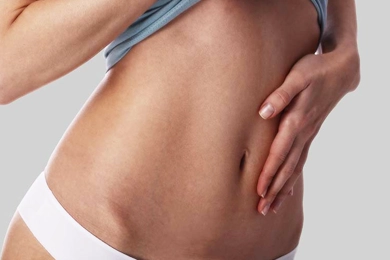 Vaser Abdominoplasty: A New Dawn in Tummy Tuck Innovation
Vaser Abdominoplasty: A New Dawn in Tummy Tuck InnovationAbdominoplasty, commonly known as a tummy tuck has long been a well-liked option for anyone hoping to get a more toned, flatter tummy. Read More...
 Pain After Tummy Tuck Surgery
Pain After Tummy Tuck SurgeryAbdominoplasty, also referred to as tummy tuck surgery, is a widely performed cosmetic procedure that can assist in attaining a more sculpted and flatter abdominal region. Read More...
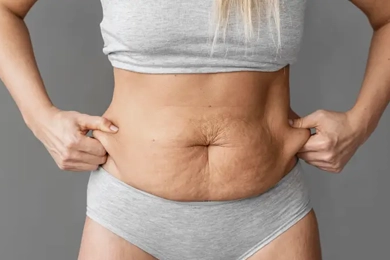 Can Diabetic Patients Have Tummy Tuck?
Can Diabetic Patients Have Tummy Tuck?Diabetes is a long-term medical illness that interferes with your body's ability to control blood sugar, or glucose. Type 1 and Type 2 diabetes result from the body's inability to use the insulin that is pro Read More...
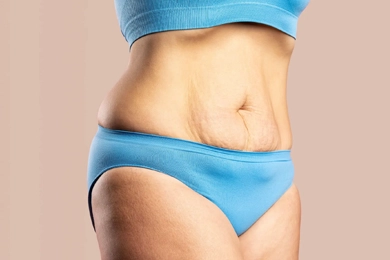 Is Tummy Tuck Surgery Painful? A Comprehensive Insight
Is Tummy Tuck Surgery Painful? A Comprehensive InsightMany people are drawn to the idea of getting a tummy tuck (abdominoplasty) in order to have a flatter, more toned abdomen. Prospective patients frequently struggle with worries about the discomfort of the su Read More...
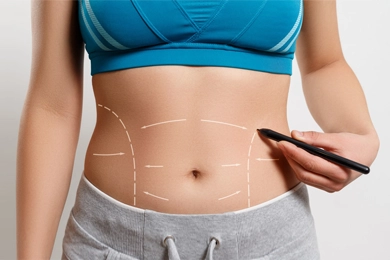 Understanding Tummy Tuck Surgery Risks
Understanding Tummy Tuck Surgery RisksThe goal of tummy tuck surgery, also referred to as abdominoplasty, is to remove extra skin and fat from the abdominal region to produce a flatter, more toned midsection. Read More...
 What Kind of Scar to Expect After a Tummy Tuck
What Kind of Scar to Expect After a Tummy TuckTo get a flatter, more toned abdomen, are you thinking about having a tummy tuck? It's important to realize that tummy tucks come with some degree of scarring even though they can produce noticeable aestheti Read More...
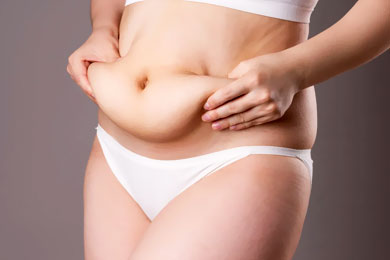 What Are The Factors Affecting Tummy Tuck Prices?
What Are The Factors Affecting Tummy Tuck Prices?Abdominoplasty, sometimes referred to as a tummy tuck surgery, is a common cosmetic operation that can help people get a flatter and more toned midsection. Yet, depending on a number of variables, the price Read More...